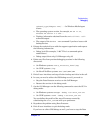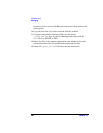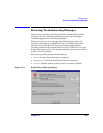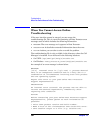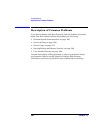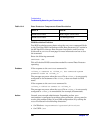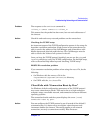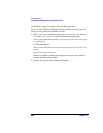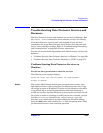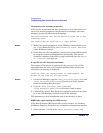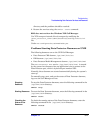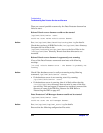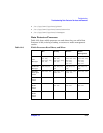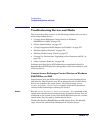
Troubleshooting
Troubleshooting Networking and Communication
Chapter 12 567
Problem The response to the omnicheck command is:
<client_1> cannot connect to <client_2>
This means that the packet has been sent, but not received because of
the timeout.
Action Check for and resolve any network problems on the remote host.
Checking the TCP/IP setup
An important aspect of the TCP/IP configuration process is the setup of a
hostname resolution mechanism. Each system in the network must be
able to resolve the address of the Cell Manager and all machines with
Media Agents and physical media devices. The Cell Manager must be
able to resolve the names of all systems in the cell.
Action Once you have the TCP/IP protocol installed, you can use the ping and
ipconfig utilities to verify the TCP/IP configuration. For detailed steps,
refer to the online Help index keyword “checking, TCP/IP setup”.
HOSTS file resolution problem
Action If you encounter resolution problems when using the Hosts file, do the
following:
• On Windows: edit the LMHosts file in the
<%SystemRoot%>\System32\drivers\etc directory.
• On UNIX: edit the /etc/hosts file.
Client Fails with “Connection Reset by Peer”
On Windows, default configuration parameters of the TCP/IP protocol
may cause connections to break. This can be due to a high network or
computer usage, unreliable network, and connections between different
operating systems.
The connection breaks and the system displays the error: [10054]
Connection reset by peer.
Action You can configure the TCP/IP protocol to use 8 instead of the default 5
retransmissions. It is better not to use higher values because each
increment doubles the timeout. The setting applies to all network
connections, not only to connections used by Data Protector.



